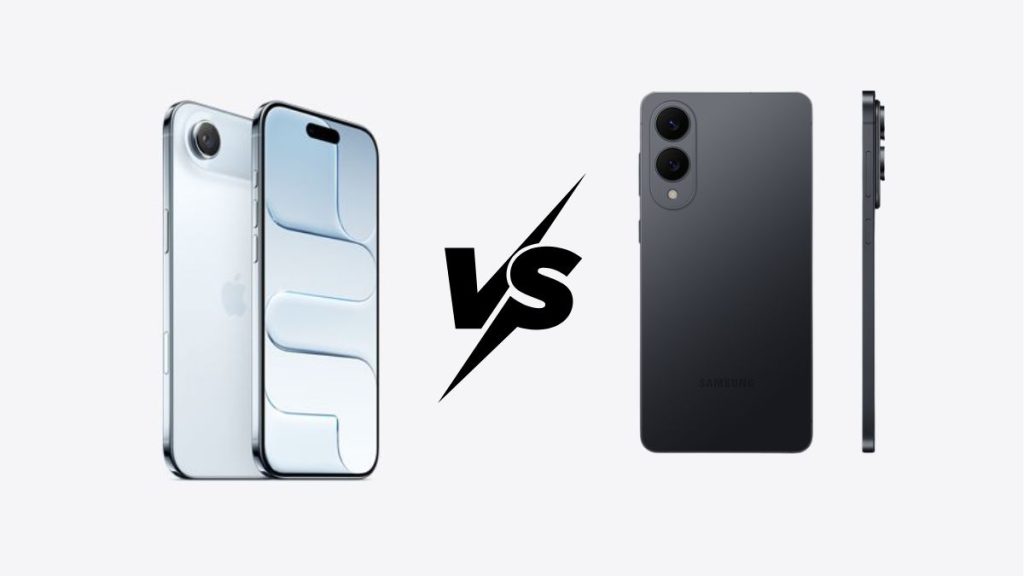Ultra-thin phones are making a comeback, and the two tech giants are locked in a tight battle. On one side, Apple is unveiling its iPhone Air, while on the other, Samsung is betting everything on its Galaxy S25 Edge. So, who comes out on top in this race to slimness?
Almost identical measurements
With a thickness of 5.6 mm for the iPhone Air versus 5.8 mm for the Galaxy S25 Edge, we are truly in ultra-thin territory. Apple takes a microscopic 0.2 mm lead, but Samsung counters with a slightly lighter weight: 163 grams compared to the iPhone’s 165.
Both manufacturers chose titanium, with Apple favoring a glossy finish while Samsung goes for a matte look. The iPhone uses rounded edges to appear even slimmer, although its camera module looks bulkier than the Galaxy’s compact island.

Samsung takes the lead on the display
The Galaxy S25 Edge makes a strong impression with its 6.7-inch display compared to 6.5 inches on the iPhone Air. Even more striking, its pixel density reaches 513 ppi versus Apple’s 460 ppi. Both screens offer a 120 Hz refresh rate, but the iPhone catches up with a peak brightness of 3000 nits compared to Samsung’s 2600.
Apple relies on its Ceramic Shield 2, while Samsung uses Gorilla Glass Ceramic 2. It’s hard to separate these two protections on paper, but the iPhone adds an anti-reflective coating that Samsung chose not to include.
Power, the eternal sticking point
Apple claims its A19 Pro is the fastest chip in the world. Samsung counters with the Snapdragon 8 Elite for Galaxy, currently the best on the Android side. It is impossible to pick a winner without thorough testing, but Samsung has an ace up its sleeve: a vapor chamber to dissipate heat, which is crucial in a device this thin.
Both smartphones come with 12 GB of RAM and 256 GB of base storage. Apple offers up to 1 TB, while Samsung tops out at 512 GB, giving Apple the edge.
Photos: Samsung brings out the heavy artillery
No contest here. Samsung dominates with its 200 MP main sensor, far surpassing the iPhone’s 48 MP, and adds a 12 MP ultra-wide lens that Apple lacks entirely. The Galaxy handles 8K video or 4K at 120 fps, while the iPhone is capped at 4K 60 fps.
Apple fights back with its 18 MP front camera, sharper than the Galaxy’s 12 MP, and a clever square sensor design that allows horizontal shots even when holding the phone vertically.

Battery life: Samsung widens the gap
With 3900 mAh compared to 3149 mAh for the iPhone, Samsung delivers 23% more battery in a similar form factor. Impressive. Fast charging also favors the Galaxy: 25W versus 20W, allowing 55% battery recovery in 30 minutes compared to 50% for the iPhone.
Apple catches up with wireless charging at 20W versus 15W for Samsung, but it doesn’t make up for the difference in capacity.
The Verdict
Samsung seems to have found the winning formula with its S25 Edge: more screen, more battery, better camera versatility, all in a form factor as compact as the iPhone Air. Apple relies on its premium finish and ecosystem, but Samsung scores more points on paper.
The iPhone Air will need to prove that software optimization can make up for its technical shortcomings. One thing is certain: this ultra-thin showdown reignites interest in truly manageable smartphones.





